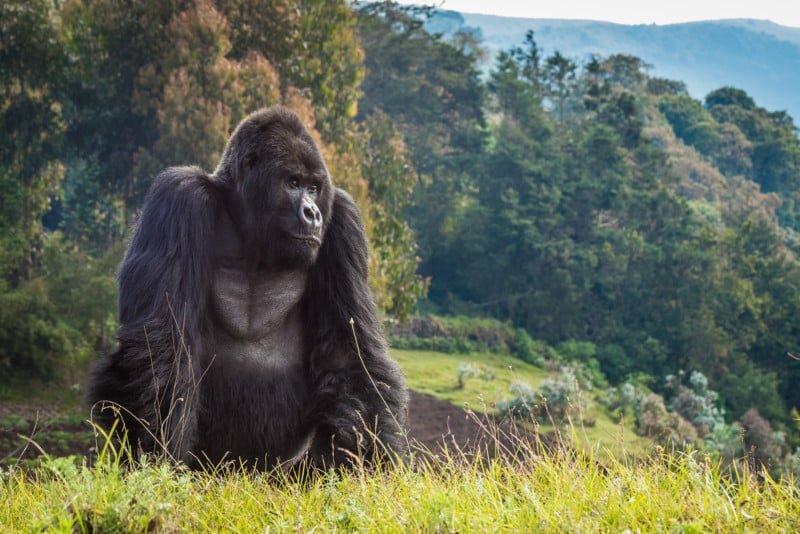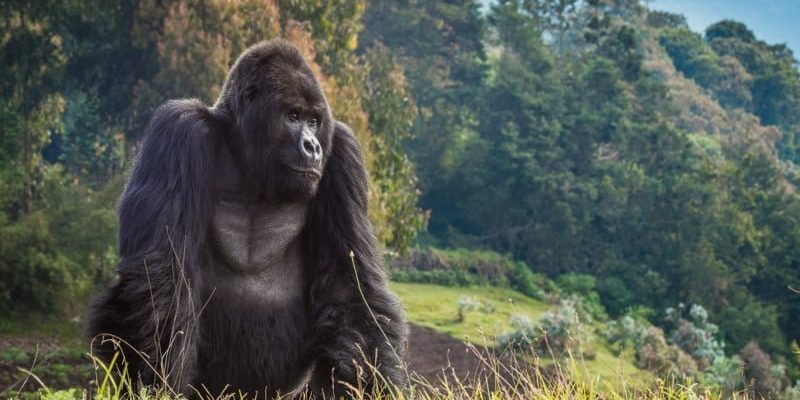
What Is a Zorilla?
First off, let’s get to know the zorilla a bit better. The zorilla, also known as the African striped weasel, is a member of the **mustelid family**, which includes animals like otters, ferrets, and badgers. You can spot them by their distinctive black and white stripes, which serve as a warning to predators that they might not be a tasty snack. It’s like nature’s own “do not disturb” sign!
Zorillas are mainly found in **sub-Saharan Africa**, preferring grasslands, savannas, and scrublands. These animals are nocturnal, meaning they come alive at night, hunting for small mammals, insects, and birds. Picture this: as the sun sets, these little hunters set out to explore their territory, using their keen sense of smell to track down dinner.
Since they’re not as well-known as some animals, many people often confuse zorillas with skunks. But here’s the thing: while both have that striking color pattern, zorillas are much more agile and slender. Plus, they have a unique way of **defending themselves**—when threatened, they can release a pungent spray similar to that of a skunk. Talk about a wild party trick!
Are Zorillas Endangered?
So, is the zorilla endangered? The short answer is no, but the situation isn’t exactly rosy either. The zorilla is currently classified as *Least Concern* on the IUCN Red List, which means they aren’t at a high risk of extinction right now. But hold on—just because they’re not endangered doesn’t mean they’re thriving in every corner of their habitat.
You might be wondering about the threats they face. **Habitat loss** is a significant concern. As human populations grow and develop land for agriculture and cities, zorillas lose their natural homes. It’s like if someone moved into your neighborhood and started building high-rises where you used to play! Additionally, they can suffer from hunting and trapping, often seen as pests by farmers or sought after for their pelts.
While the zorilla isn’t in immediate danger of disappearing, it’s essential to keep an eye on their populations. Conservation efforts play a crucial role in ensuring these unique creatures continue to thrive in their habitats. It’s like keeping the doors open for future generations to enjoy their quirky charm!
Conservation Efforts for Zorillas
Now that we’ve established the zorilla isn’t endangered, let’s talk about what’s being done to support their populations. Conservation efforts are vital in maintaining a healthy ecosystem for zorillas and the wildlife around them. Various organizations are working tirelessly to study these animals and raise awareness about their plight.
One key focus is habitat preservation. Protecting the grasslands and savannas where zorillas live helps ensure they have the space they need to thrive. For example, setting up protected areas where human activities are limited can allow these little critters to roam freely and hunt without interference. It’s like building a safe haven just for them!
Education is another crucial part of conservation. By informing local communities about the importance of zorillas and their role in the ecosystem, we can foster a greater understanding of how to coexist. You know how you sometimes have to explain the rules of a board game multiple times before it sinks in? That’s a bit like what conservationists are doing—teaching about these animals to create a brighter future.
Lastly, supporting wildlife corridors can help animals like the zorilla safely move between habitats. Think of it as creating a highway just for wildlife! These corridors ensure that zorillas can find mates, food, and shelter without facing barriers, which ultimately supports their populations.
The Role of Zorillas in Ecosystems
You might be curious about why keeping zorillas around is essential. These little creatures might not seem like a big deal, but they play a significant role in their ecosystems. Zorillas help control populations of pests like rodents and insects, which can impact crops and other wildlife.
By keeping these pest populations in check, zorillas indirectly benefit farmers and the local economy. Imagine having a tiny workforce that helps keep your garden free of unwanted critters—how cool is that? Plus, when zorillas hunt, they help maintain a balance in the food web, ensuring that no single species dominates.
These little foragers also contribute to the soil quality. As they dig for food, they aerate the ground, helping plants thrive. It’s like nature’s way of giving a helping hand to the local flora. By preserving zorillas, we’re not just saving one species; we’re supporting an entire ecosystem.
How Can You Help Zorillas?
If you’re feeling inspired and want to make a difference for zorillas, there are several ways you can help! One of the simplest things is to spread awareness. Sharing what you know with friends and family can spark interest in animal conservation. Imagine hosting a casual gathering and discussing all the quirky facts about zorillas—you might inspire someone to get involved!
Another way to contribute is by supporting conservation organizations dedicated to protecting wildlife. Donating even a small amount can go a long way in funding research and habitat preservation projects. It’s like chipping in for a community pool—you might not dive in every day, but your contribution helps create a refreshing space for everyone.
Lastly, you can advocate for sustainable practices in your community. By promoting responsible land use, organic farming, and habitat conservation, you can help protect not just zorillas but countless other species that share their home. Just think of the ripple effect you could create!
In conclusion, while the zorilla is not currently classified as endangered, its future is still uncertain due to habitat loss and other threats. Understanding the importance of these unique animals helps us appreciate the delicate balance of our ecosystems. By supporting conservation efforts, spreading awareness, and advocating for sustainable practices, we can ensure that zorillas and countless other species continue to thrive for generations to come.
So next time you think about rare animals, don’t forget about the zorilla! They may be small, but they play a big role in their world, and every little action counts in protecting their future. After all, if we can preserve these quirky creatures, we’re that much closer to maintaining the beauty and diversity of our planet.

